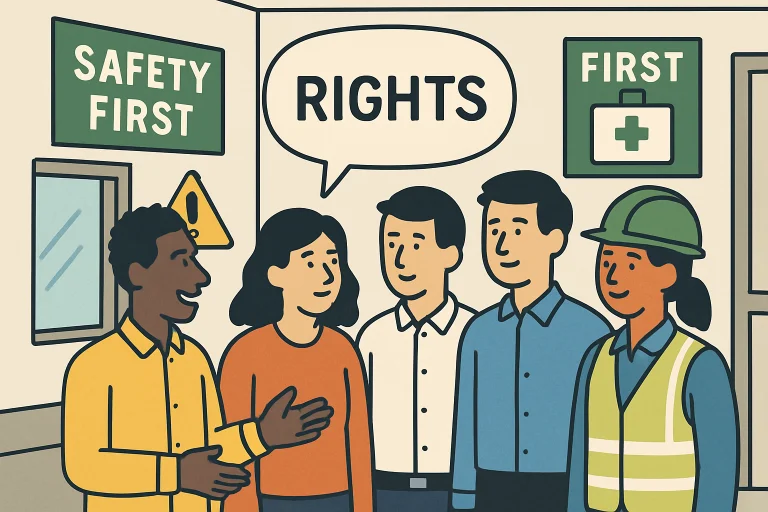Fundamental Rights of Employees
Every individual entering the workforce is entitled to receive protection and support that ensures both their physical and mental well-being. Fundamental rights in the workplace cover essential aspects such as safety from hazards, access to necessary equipment, and the ability to voice concerns without apprehension. These cornerstone protections serve as a critical foundation for both new employees and seasoned professionals. When an accident or unsafe situation arises, understanding your options and getting the right assistance matters—a workers comp lawyer Florida can guide employees through complex legal matters and ensure rights are upheld in case of injury or workplace concerns.
Federal and state regulations, enforced primarily by the Occupational Safety and Health Administration (OSHA), are in place to guarantee that employees are provided with a workplace free from recognizable hazards. This includes the right to request safety inspections, access personal medical records, and participate in developing safety policies. Knowing these entitlements not only keeps employees protected but also empowers them to act confidently and responsibly in the event of workplace disputes or injuries.
There’s so much more to discover—browse our related posts!
Recent Legislative Changes Enhancing Workplace Safety
Lawmakers across the United States are taking significant steps to reinforce workplace safety through the enactment of robust legislation. Notably, in California, Senate Bill 553 requires employers with 10 or more workers to implement comprehensive Workplace Violence Prevention Plans by July 2024. This new law sets a precedent by mandating proactive training on recognizing, preventing, and addressing threats of violence and record-keeping of all related incidents for five years.
Beyond California, states continue to strengthen protections around workplace health, exposure to hazardous materials, and mental health parity. The evolution of these laws reflects a broader acknowledgment that healthy, informed employees lead to safer, more productive organizations. For updated guidance, resources provide valuable insight for both workers and employers.
Employer Responsibilities in Ensuring Safety
It is the employer’s duty to foster a secure environment by systematically identifying risks, implementing robust protocols, and ensuring consistent employee training. Beyond hazard recognition and mitigation, employers must provide proper safety equipment and inform staff about potential dangers. Accurate labeling of hazardous materials, easily accessible safety data, and prompt response to safety concerns are all indispensable elements of a responsible workplace.
Regular risk assessments, periodic safety drills, and transparent communication help build a resilient safety culture. Such measures do not just comply with the law—they reduce injury risks, lower costs, and enhance overall morale. Companies prioritizing these responsibilities often see a stronger sense of community and trust within their workforce.
Reporting Unsafe Conditions Without Fear
Fear of retaliation can be a significant barrier to reporting unsafe practices or conditions. U.S. law provides substantial whistleblower protections to safeguard employees who raise genuine concerns about the workplace. The process for confidentially filing a complaint with OSHA is clear and accessible, enabling employees to take action quickly. Employers are obligated by law to respect and protect those who report, ensuring that no adverse actions are taken in response to legitimate safety concerns.
Encouraging a culture where open dialogue about workplace safety is the norm—rather than the exception—makes organizations safer for everyone. Recent examples and statistics from the OSHA Worker Rights and Protections portal outline how critical it is for employees to understand their reporting rights.
Staying Informed: Resources and Training
Continuous learning is vital to maintaining workplace safety and compliance. Employees should actively engage in scheduled training and seek government or industry resources for ongoing education. Newsletters, workshops, and regular briefings help employees recognize risks and best practices. Employers can facilitate knowledge-sharing by distributing up-to-date guides and alerting staff to changes in the law or safety standards.
Alongside mandatory training, optional learning opportunities add additional layers of protection and preparedness. Resources like the Centers for Disease Control and Prevention’s workplace safety topics offer practical guidance for any industry.
The Role of Technology in Workplace Safety
Modern technology, from real-time hazard sensors to sophisticated employee monitoring systems, has revolutionized workplace safety. These advancements enable employers to detect risks sooner, respond to emergencies faster, and streamline compliance. However, as digital surveillance and data collection become increasingly prevalent, concerns about privacy grow equally urgent.
Balancing effective oversight with employees’ rights to privacy is an ongoing challenge, and regulations must keep pace. Transparent communication about monitoring practices and strict adherence to relevant laws help maintain trust while protecting assets and information.
Addressing Mental Health and Well-being
Physical safety is only one aspect of overall workplace health. Legislation now frequently requires that mental health coverage be equivalent to physical health benefits, expanding access to support for stress, anxiety, and related conditions. Proactive employers are investing in counseling, resilience programs, and supportive leadership to foster a culture of well-being.
Recognizing and addressing workplace stressors and encouraging regular mental health check-ins create environments where everyone feels valued and supported. This focus not only reduces absenteeism but also leads to improved engagement and productivity organization-wide.
Conclusion
Navigating the modern workplace is safer and more empowering when employees understand their rights and the resources available to them. Actively participating in training sessions, using verified information sources, and knowing how to respond to unsafe conditions make a measurable difference. To ensure ongoing protection and well-being, employers and employees must prioritize communication, continuous improvement, and accountability—cornerstones of a safe and successful workplace.
Discover fresh content every day—visit 2A Magazine.







